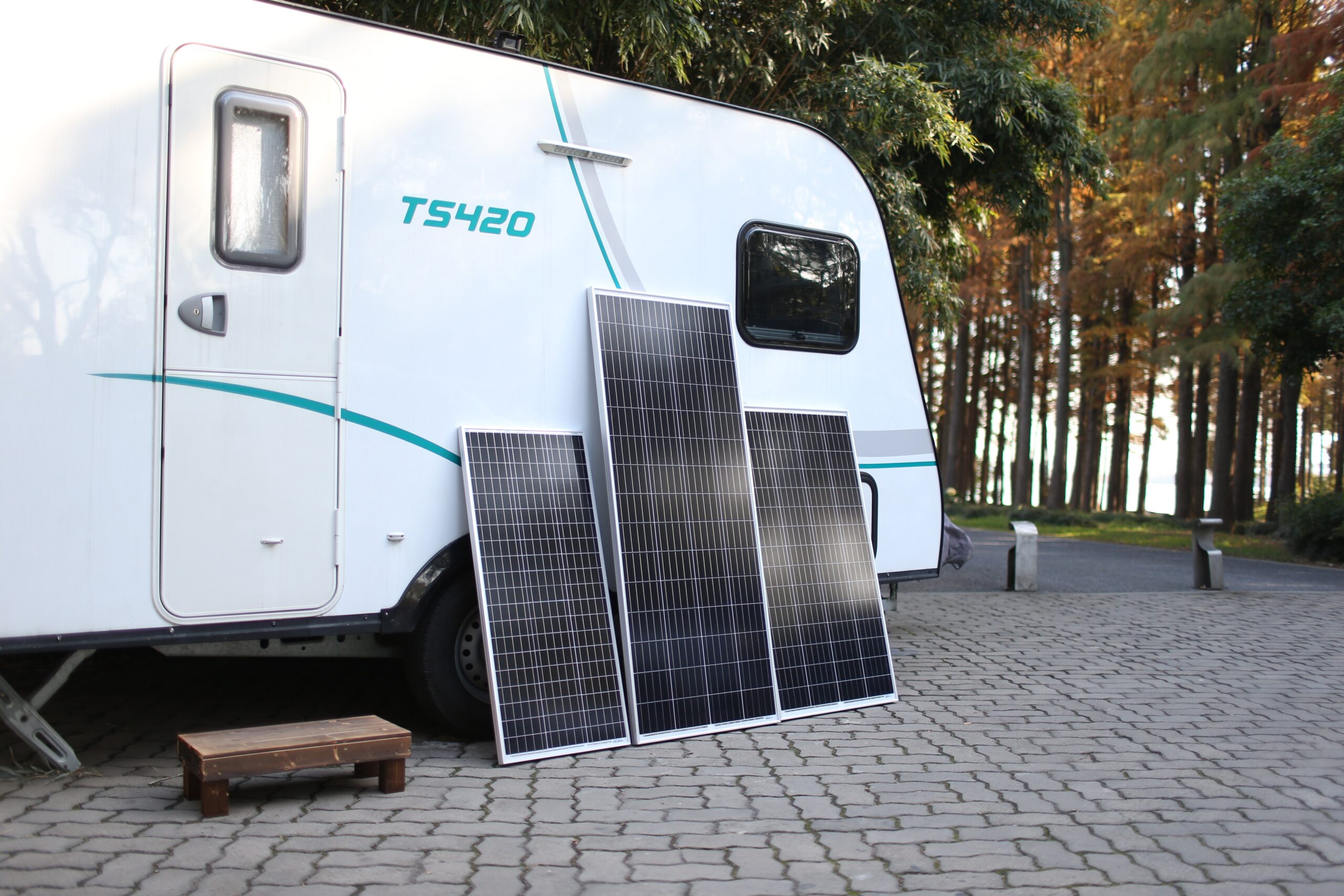RV owners looking to reduce their dependency on the grid and save on energy bills may be interested in retrofitting their vehicles with solar panels.
There are many options for solar systems, from small solar panels installed on the RV roof to larger systems that can power the entire vehicle.
Installing a solar system can bring several benefits, such as B. the reduction or avoidance of generator operation, savings in fuel costs, and longer battery life. However, a few things to consider before installing a solar panel on your RV.
Why is a solar system in a mobile home useful?
A solar panel on the RV is useful because it helps generate electricity without using fossil fuels. Solar panels convert sunlight into electrical energy, which can then be used to power lights, appliances, and other electronic equipment.
In addition, you are independent of the public network, which can be very practical, especially on longer tours abroad.
A typical solar panel can generate enough electricity to power a small household daily. Solar energy is not only environmentally friendly but also very efficient.
Solar modules usually have an efficiency of around 20%. This means they can convert up to 20% of the sunlight that hits them into electrical energy. Therefore, a solar powered generator system can provide significant electricity even on cloudy days.
What types of solar systems for mobile homes are there?
A solar system is a great way to power your camper, trailer, or camper. It is easy to install, power lights and devices, and charge cell phones or laptops.
There are two main types of solar systems: photovoltaic systems in aluminum frames and portable solar panels for RV with adhesive surfaces.
Aluminum frame photovoltaic panels are one type of solar panel available in the market. As the name suggests, these modules have an aluminum frame supporting them. To install this type of panel, it is necessary to install brackets or profiles on the vehicle’s roof.
Once installed, these panels are rigid and cannot be removed from the roof. However, it is important to know that this type of panel is more expensive than other solar panels.
Solar panels with adhesive surfaces are a new type of solar panels that are very flexible. They have the advantage of being flatter and hardly increasing the car’s overall height.
The disadvantage of this solar panel system is that they are not as durable as conventional solar panels.
What are the components of such a photovoltaic system?
Charge controller
A charge controller is an important part of every photovoltaic system. It regulates the energy flow from the solar panels to the battery and prevents it from being overcharged. Without a charge controller, the battery would quickly overheat and become damaged.
To choose the right charge controller for your system, you need to know the wattage of your solar panels. The charge controller must be able to absorb at least as much power as your solar system produces. With the right charge controller, you can ensure that your photovoltaic system runs smoothly and efficiently.
Solar panels
If you choose photovoltaic panels for your motorhome, you have two options: permanently installed modules or modules that are glued to the roof of your motorhome. Both types of panels have pros and cons, so it’s important to consider your needs before deciding.
Battery
The type of battery you choose for your storage media is important. A starter battery is not ideal because it is not designed to provide power over a long period. A wet battery is a better option but can only be used outdoors.
Gel batteries, solar batteries, and deep cycle batteries are good choices for indoor use. When choosing lithium RV batteries, please pay attention to the climate in which they will be used and the amount of energy required.
Other required accessories (depending on wiring)
- Solar Cables: There are single and double solar cables, and they should only be as long as necessary to avoid wastage. Solar cables are also available in different cross-sections. The cable cross-section must correspond to the solar power requirements of the off-grid solar system. In addition, ready-made solar cables with mounted plugs are also available. Designed for easy installation, these cables provide a reliable connection for solar power systems.
- MC4 connectors: They are easy to use and allow for various cable cross-sections. Most modules are already fitted with MC4 connectors but are also available separately. When assembling solar connectors yourself, it is important to crimp them correctly to ensure a secure connection.
- Y connectors are an essential part of any solar panel system. They parallel the modules to allow the facility to generate more power. The connectors can be connected with MC4 connectors.
- Cable for the battery: The correct cable cross-section must be selected to ensure that the current can flow unhindered. The battery cable must also be fitted with a suitable fuse.
Which types of solar panels are right for you?
There are different types of solar panels to choose from.
- Monocrystalline solar cells are made from a single crystal of silicon and are known to be efficient and stable.
- Polycrystalline solar cells are made from multiple silicon crystals. Although they are not quite as efficient as monocrystalline modules, they are often cheaper.
- Thin film modules consist of a thin layer of solar material, and while less efficient than monocrystalline or polycrystalline modules, they are often better in diffuse or shaded light.
The type of solar panel you choose depends on your specific needs and goals. However, monocrystalline solar panels are usually the best choice if you want to achieve maximum efficiency in a small space. These modules impress with their high performance, long service life, and high efficiency.
Which onboard voltage is the right one: 12 volts or 24 volts?
One of the first decisions you have to make when equipping your camper, caravan, or motor home with electrical devices is which onboard voltage you want to use: 12 V or 24 V?
Most camper and RV equipment is designed to work with 12-volt systems, so this is probably your best bet. You could also opt for a 24-volt system, the standard truck voltage.
The main advantage of a 24-volt system is that it can provide more power for devices that require a lot of power, such as B. Air conditioners. If you build a 24V solar power system, a 24v battery is exactly what you need. However, 24-volt systems are also more expensive and require more maintenance than 12-volt systems. So unless you need the extra power that a 24-volt system offers, it probably isn’t worth it.
Conclusion
It would help if you considered a few things to retrofit a solar system in your motorhome. The most important decision is what type of solar panels you want to use – monocrystalline, polycrystalline, or thin film. You also have to decide on the voltage – 12 or 24 volts.
Once you’ve made these decisions, purchasing the rest of the components is time. You will need cables, connectors and fuses, and a battery cable and fuse. Make sure you’re buying quality components that will last for years in harsh conditions.
With a little research and preparation, you can easily equip your RV with your solar power system. This not only saves you money in the long run but also helps to reduce your ecological footprint.






























